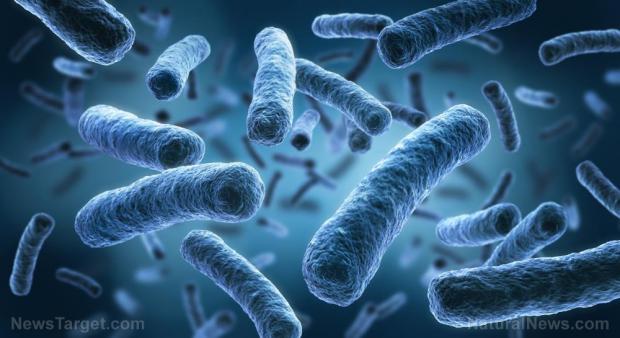
Breaking News
 Timeline: The Sabotage Of The Clinton Foundation Investigation
Timeline: The Sabotage Of The Clinton Foundation Investigation
 Mass Attacks: We're On Our Own
Mass Attacks: We're On Our Own
 Reversing Alzheimer's: The Forgotten Causes And Cures Big Pharma Buried
Reversing Alzheimer's: The Forgotten Causes And Cures Big Pharma Buried
 How To Retire US Debt, Monetize Assets, Help Americans Hedge Financial Risks and Keep...
How To Retire US Debt, Monetize Assets, Help Americans Hedge Financial Risks and Keep...
Top Tech News
 This tiny dev board is packed with features for ambitious makers
This tiny dev board is packed with features for ambitious makers
 Scientists Discover Gel to Regrow Tooth Enamel
Scientists Discover Gel to Regrow Tooth Enamel
 Vitamin C and Dandelion Root Killing Cancer Cells -- as Former CDC Director Calls for COVID-19...
Vitamin C and Dandelion Root Killing Cancer Cells -- as Former CDC Director Calls for COVID-19...
 Galactic Brain: US firm plans space-based data centers, power grid to challenge China
Galactic Brain: US firm plans space-based data centers, power grid to challenge China
 A microbial cleanup for glyphosate just earned a patent. Here's why that matters
A microbial cleanup for glyphosate just earned a patent. Here's why that matters
 Japan Breaks Internet Speed Record with 5 Million Times Faster Data Transfer
Japan Breaks Internet Speed Record with 5 Million Times Faster Data Transfer
 Advanced Propulsion Resources Part 1 of 2
Advanced Propulsion Resources Part 1 of 2
 PulsarFusion a forward-thinking UK aerospace company, is pushing the boundaries of space travel...
PulsarFusion a forward-thinking UK aerospace company, is pushing the boundaries of space travel...
 Dinky little laser box throws big-screen entertainment from inches away
Dinky little laser box throws big-screen entertainment from inches away
 'World's first' sodium-ion flashlight shines bright even at -40 ºF
'World's first' sodium-ion flashlight shines bright even at -40 ºF
Scientists discover "electric" bacteria - can it lead to next-gen batteries & miniature pa

Called Geobacter sulfurreducens, the anaerobic bacteria possess a unique biological structure. This previously unidentified feature makes it possible for the microbe to conduct electricity.
Researchers believe it is possible to replicate the bacteria's natural structure and improve its ability to generate electricity. A refined synthetic version of the formation may power miniature electronics and make it possible to design tiny batteries with high capacity.
Medical technology stands to benefit from the bacteria-derived structure. The electricity-generating shape may make it possible to dispense with potentially harmful wires when designing pacemakers for the heart.
The discovery came from researchers at the University of Virginia (UVA). Their findings were published in the science journal Cell. (Related: Purple phototrophic bacteria being studied as a potential means to convert sewage to clean energy.)
This bacteria can release electricity through unique nanowire structures
Most bacteria possess hair-like pili. Electricity-generating microorganisms transmit their charge through these extended appendages.
Previously, experts believed that G. sulfurreducens used its pili to conduct electricity. But a team of researchers at the UVA's School of Medicine learned that this species evolved a different means of generating an electric charge.
G. sulfurreducens possesses a neat array of fibers made from another type of protein than the one found in pili. In turn, the protein envelops a "nanowire" of molecules that contain metals.
The nanowire resembles the power cord on electric appliances. The bacterial structure is far smaller, though – 100,000 such shapes can fit within the width of a human hair.
UVA researcher Dr. Edward H. Egelman believes that G. sulfurreducens' electricity-generating nanowire offers a way to connect electronics and living organic cells. He envisions a future generation of miniaturized electronic devices that run on electricity produced by G. sulfurreducens colonies.
"There are all sorts of implanted medical devices that are connected to tissue, like pacemakers with wires, and this could lead to applications where you have miniature devices that are actually connected by these protein filaments," explained Egelman.
He brought up potential uses such as bioenergy production and harvesting, cleaning up pollutants, and biological sensors.



